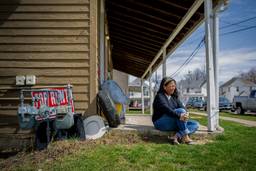HOUSTON—In early March, Denise Anderson, a Disneyland employee of 31 years and Disney stockholder, went to her very first shareholder meeting. Security was intense: A squadron of guards flanked the doors, complete with a bomb-sniffing dog. After a meet and greet with Disney characters, the small crowd—a few hundred people—was ushered into an auditorium.
The workers weren’t there to hear about box office receipts or Disneyland’s new Star Wars expansion. They came to ask Walt Disney CEO Bob Iger why a company whose parks and resorts brought in $18 billion in 2017 pays its employees so little that many live in their cars or skip meals.
They didn’t get a chance. When executives finished their reports and the question period began, employee-stockholders weren’t among the chosen few who were called on. The most substantial question was about Iger’s exercise routine.
Then, Iger announced the meeting was over. The stage lights went down, the house lights went up, and the executives fled the scene. Annual shareholder meetings often last hours; this one wrapped in one. “As a stockholder, I should have a right to ask my question,” Anderson says. “They’re so high above us, they can’t even hear our questions.”
Several dozen workers outside were determined to be heard anyway. The protesters represented a 17,000-member coalition of workers from 11 union locals who make the world-famous theme park in Anaheim, Calif., run, as well as UNITE HERE! and Teamsters union workers from Disney World in Orlando, Fla. They included the hair and makeup professionals who style the characters, the people who operate the rides, the food service workers who ensure visitors are fed and the janitors who keep everything clean. (Missing were the character actors, who aren’t unionized at Disneyland and face a greater risk of retaliation.)
The signs they struggled to hold in the wind lamented some recently published statistics: “11% Recently Homeless … 68% Food Insecure.”
Some shareholders, at least, did stop to talk and take copies of a recent survey of union Disneyland employees, published by the Economic Roundtable, a research nonprofit. It found that average hourly pay fell from $15.80 in 2000 to $13.36 in 2017. Nearly three-quarters of workers can’t cover their basic monthly expenses, more than two-thirds don’t have enough food, and 11 percent have experienced homelessness or have not had a place of their own in the last two years.
The February report galvanized workers to protest their low pay after years of sacrificing to make Disney theme parks “the happiest place on Earth.”
When Anderson first started in the costuming department in 1987, it seemed like a good use for her newly minted theater degree. Pay was $7.50 an hour when the state’s minimum was $3.35. There were decent benefits and job security. “Most people would stay there their entire lives, raise their families, buy a house, go on a vacation once in a while,” she recalls. Today there are perhaps 10 workers in her 200-person department who have been there over 20 years, she estimates; most leave within months.
Now Anderson lives paycheck to paycheck. “There’s never any security that I’m going to be able to save a little bit in case something happens,” she says. She is still paying off an unexpected medical expense from a year ago.
“I like what I do here,” she says, but the low pay is “getting harder and harder” to accept. “You put on a smile and be happy all day for other folks, and then you get in your car and you’re not even sure if you’re going to be able to have dinner.”
Worker unrest grew when the company waff led in late February on doling out the $1,000 bonuses it promised after tax reform passed in Congress. Workers who aren’t in union contract negotiations got a check for $250, with a promise of $750 in the fall. The Disneyland and Disney World workers in bargaining, which began April 17, received nothing.
In the meantime, workers and advocates are pushing for a City of Anaheim ballot measure that would require any large business subsidized by the city to pay at least $18 an hour by 2022. (Disneyland has received incentives worth more than $1 billion from Anaheim in the last two decades.)
Even without a chance to talk to Iger, Anderson is happy she went to Houston: “I think they got the message that they’re going to have to fight this time.”









